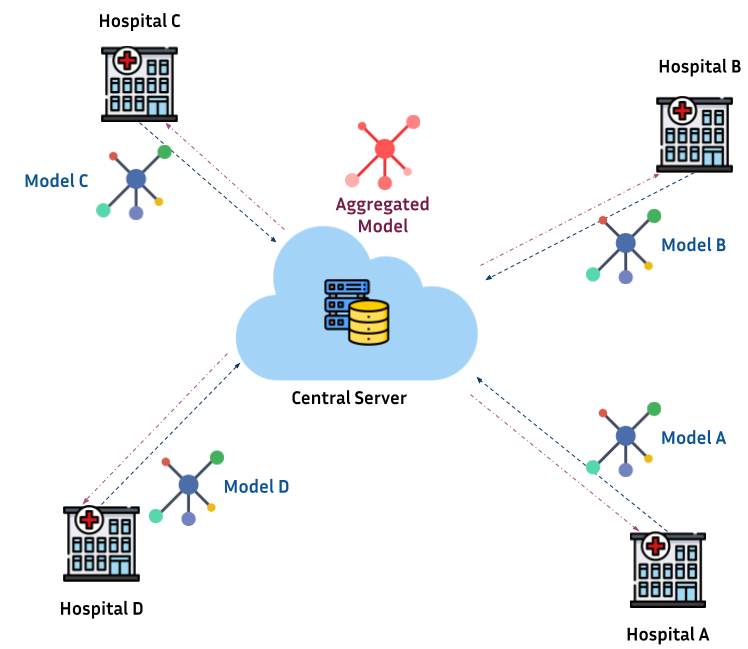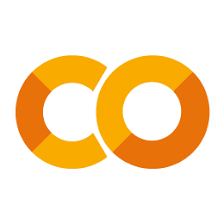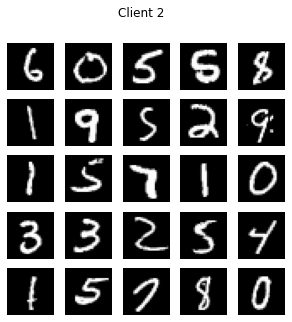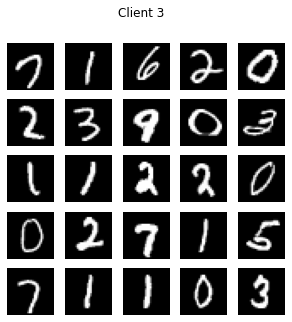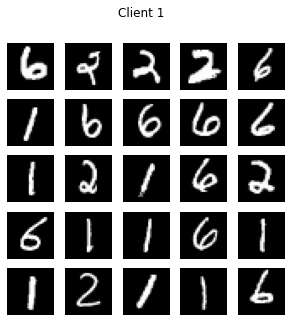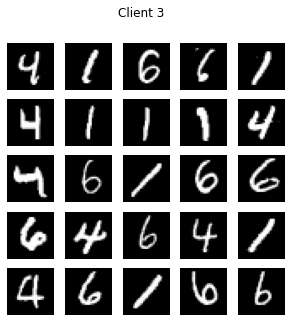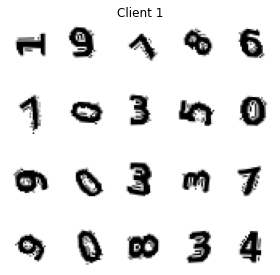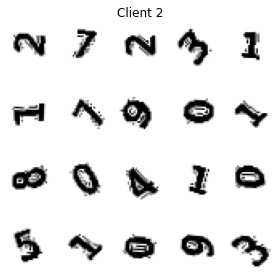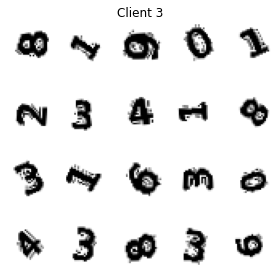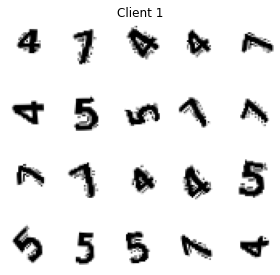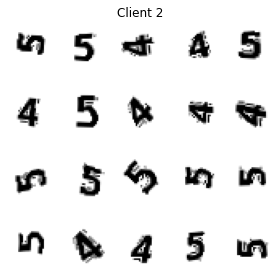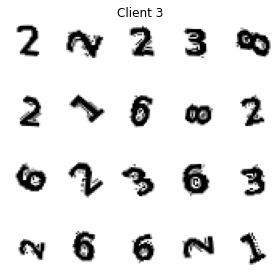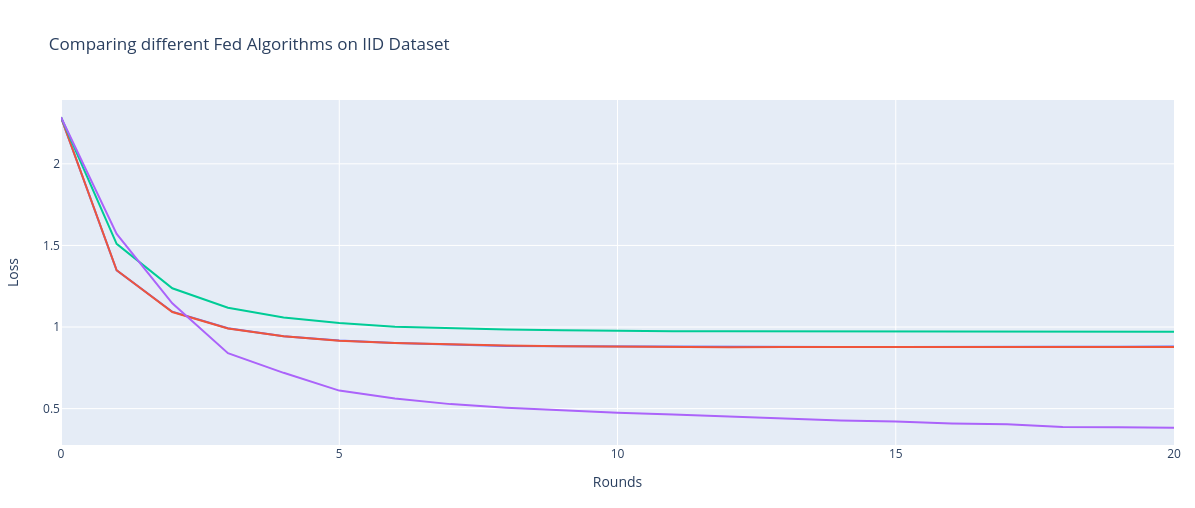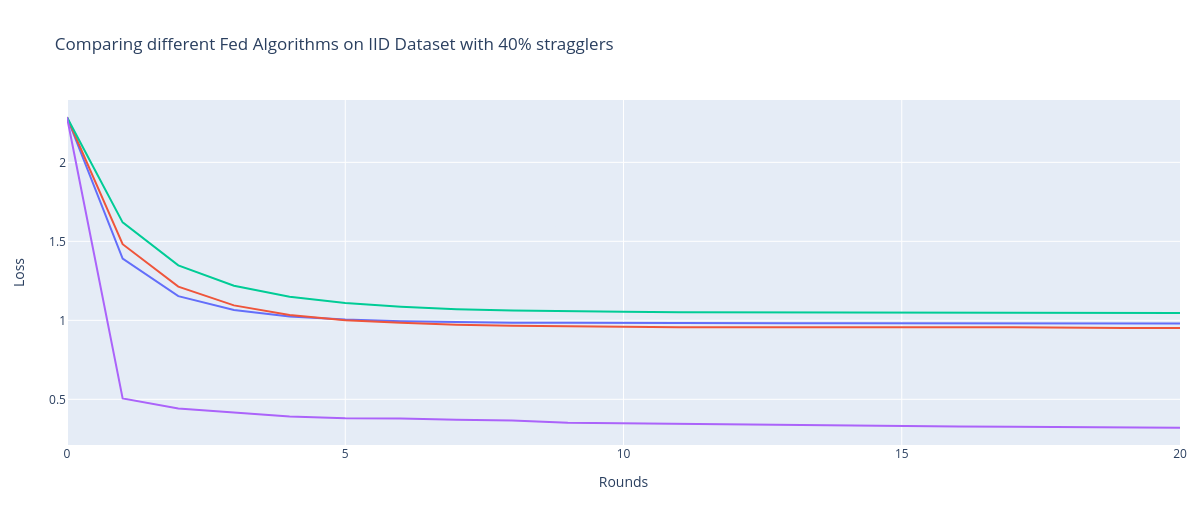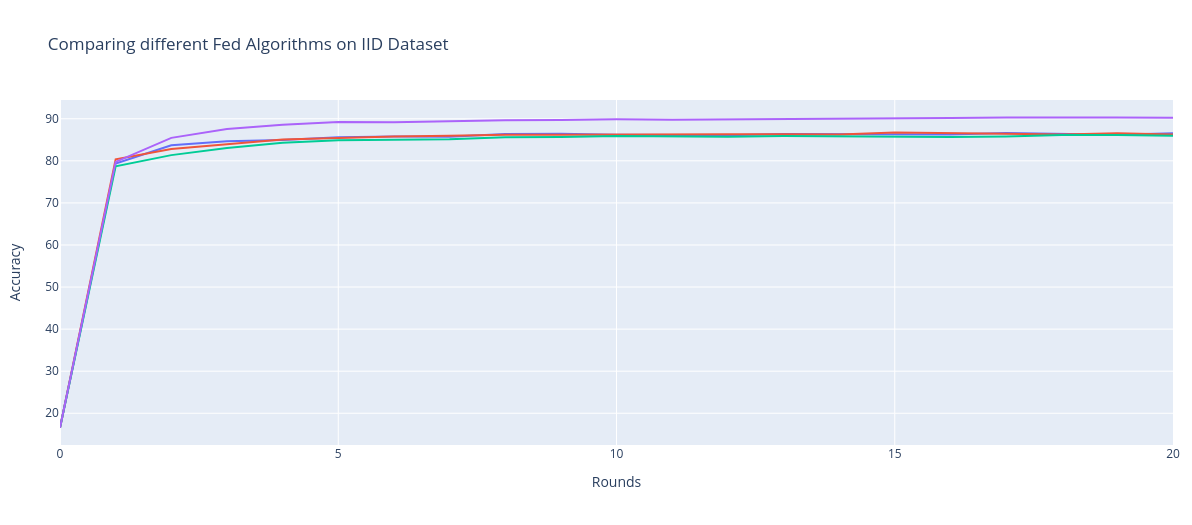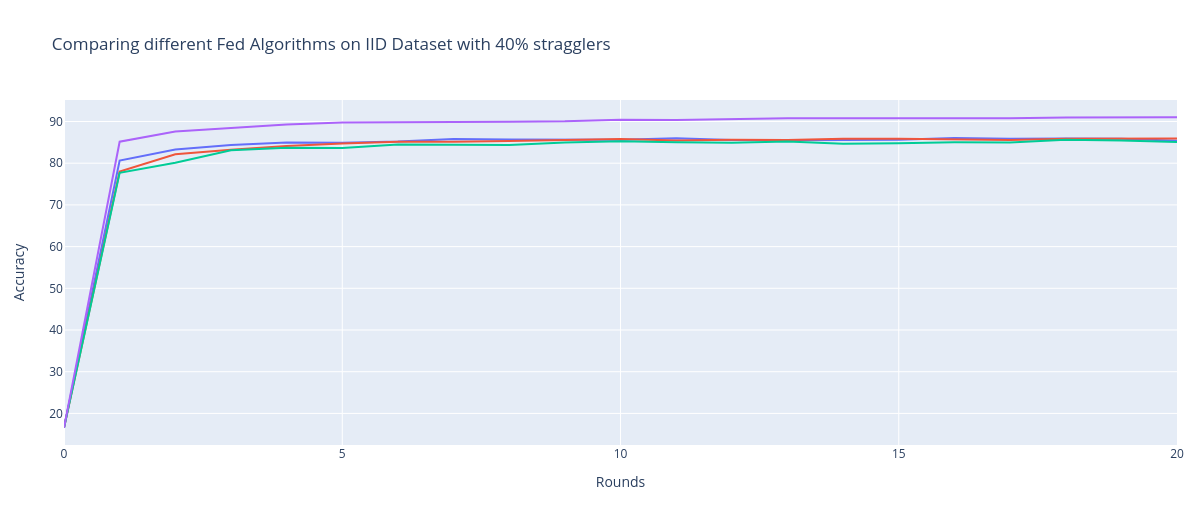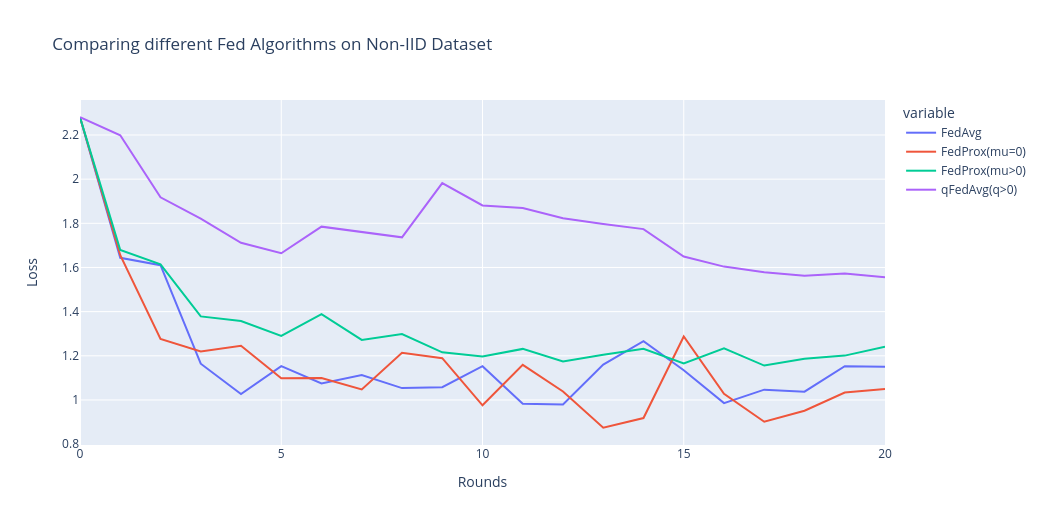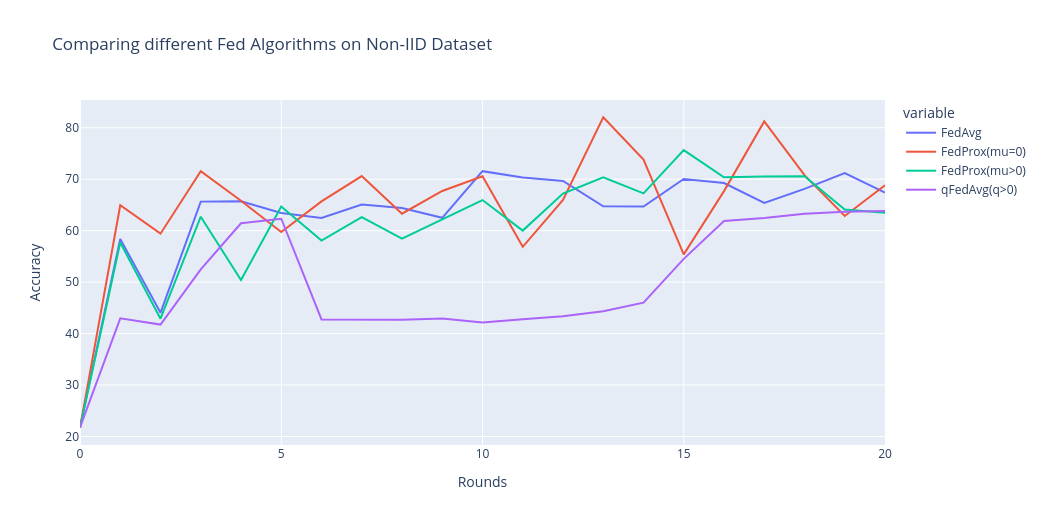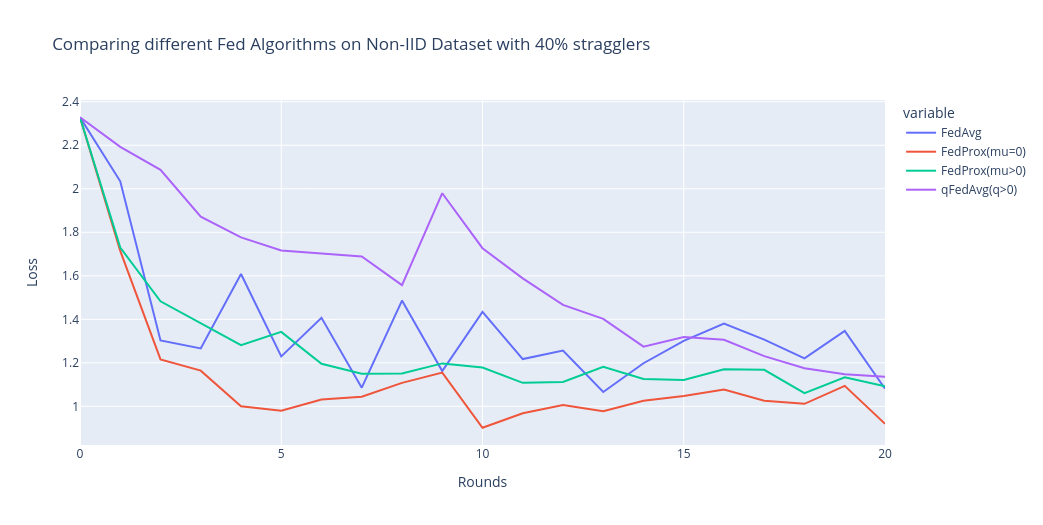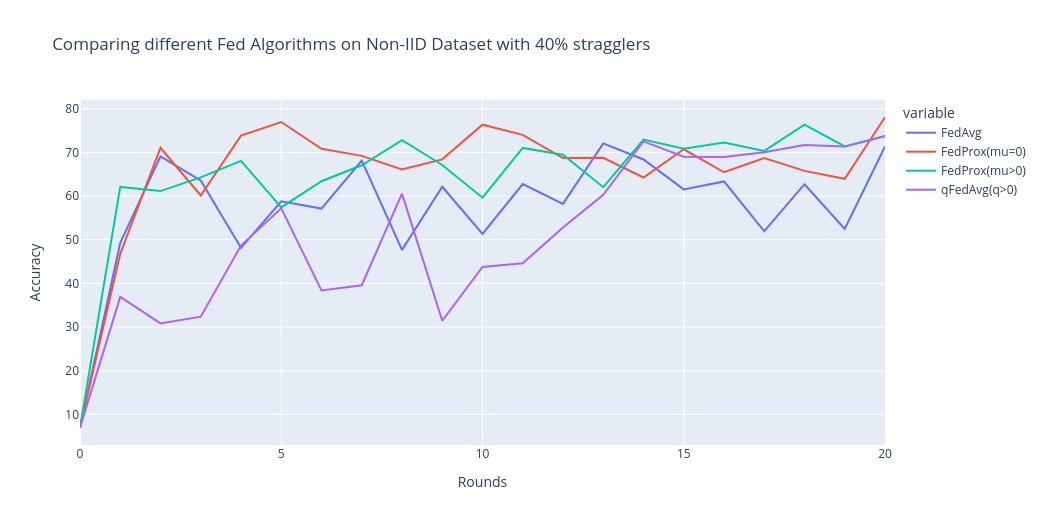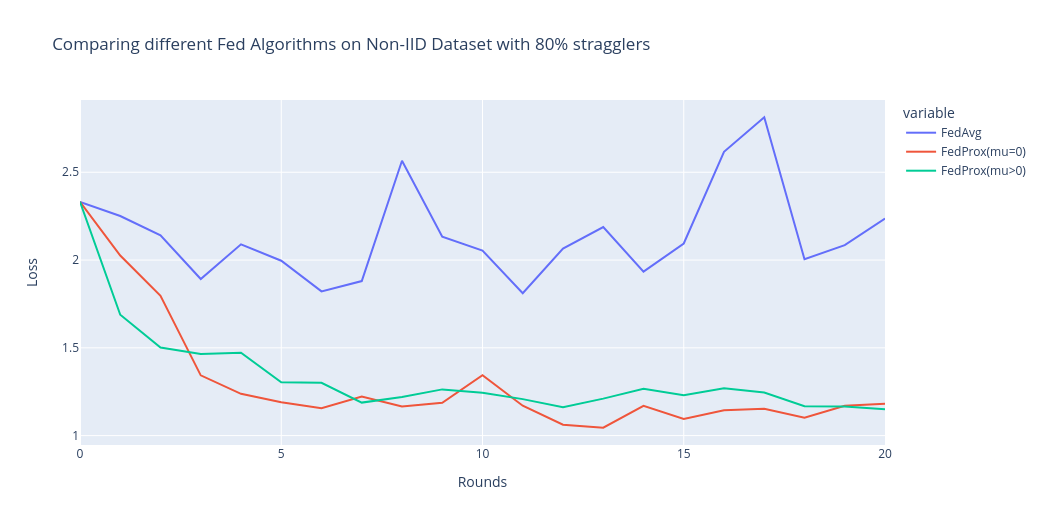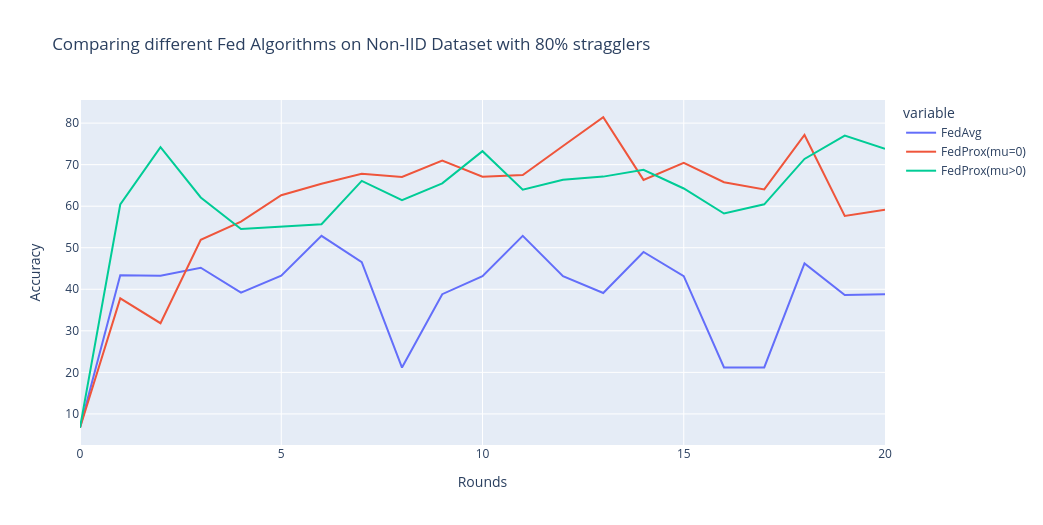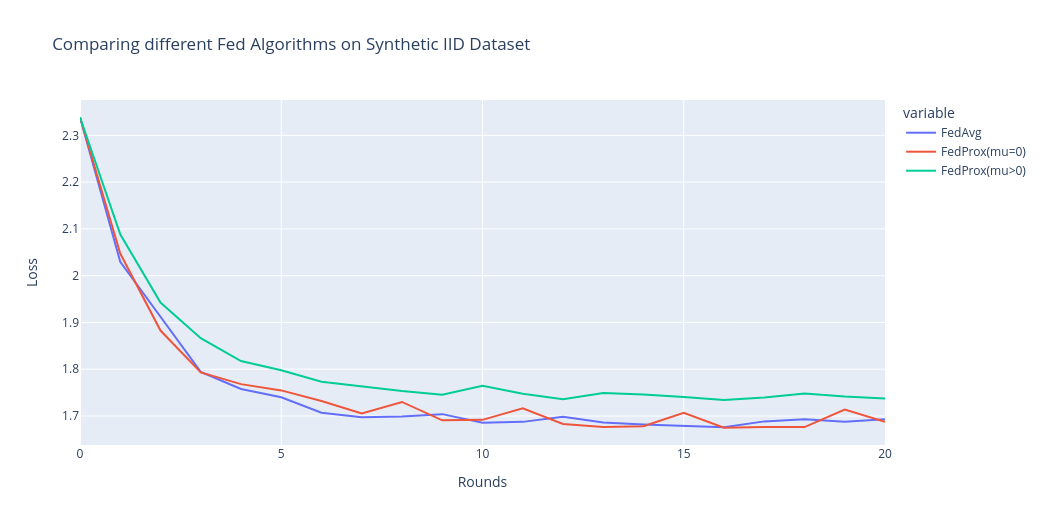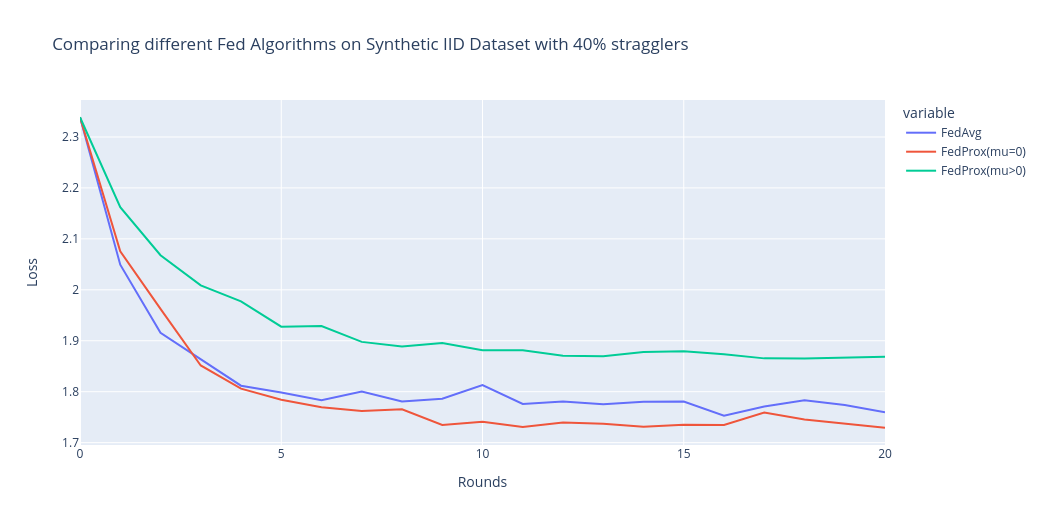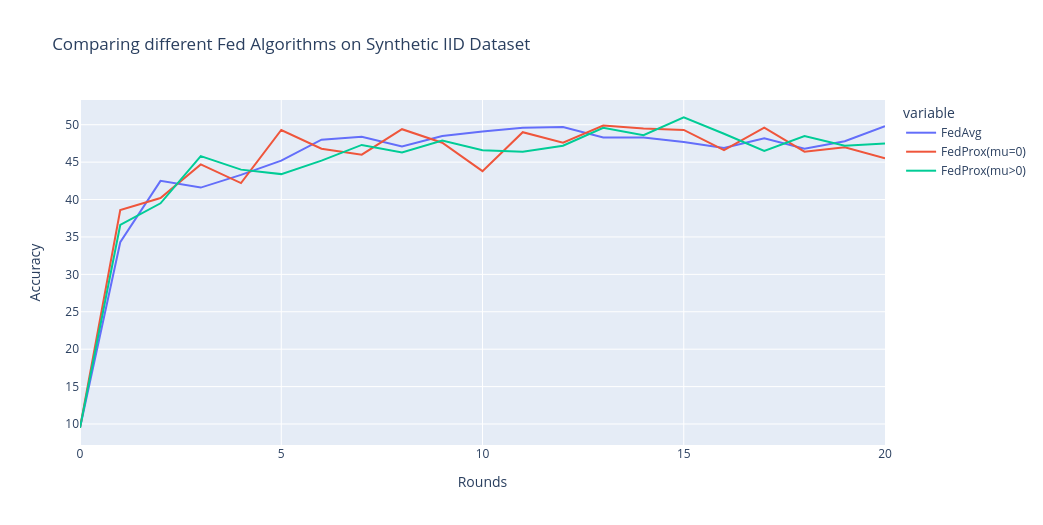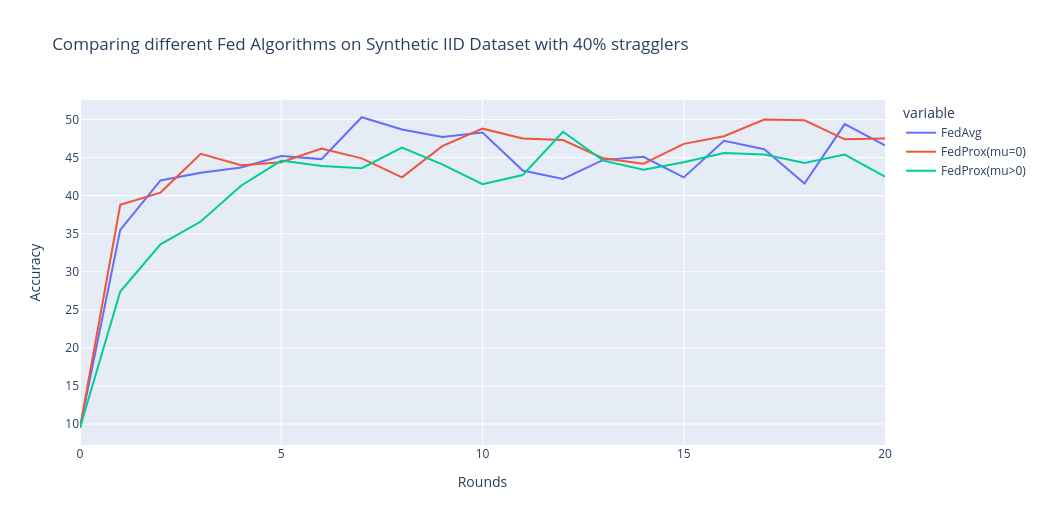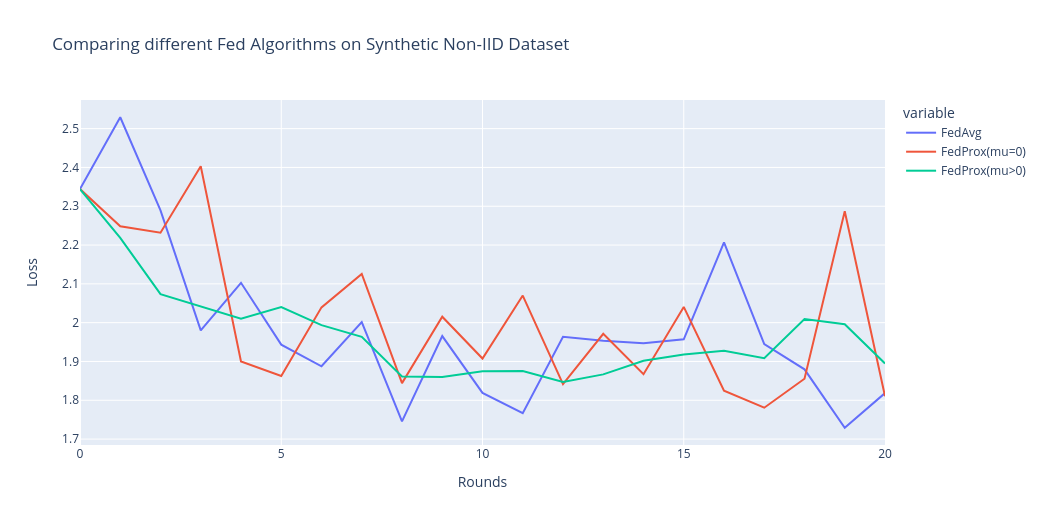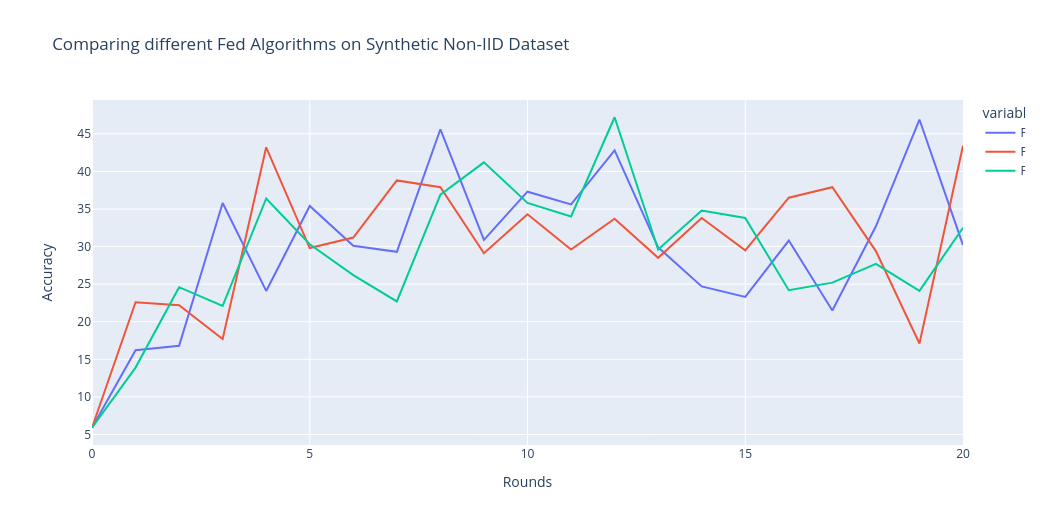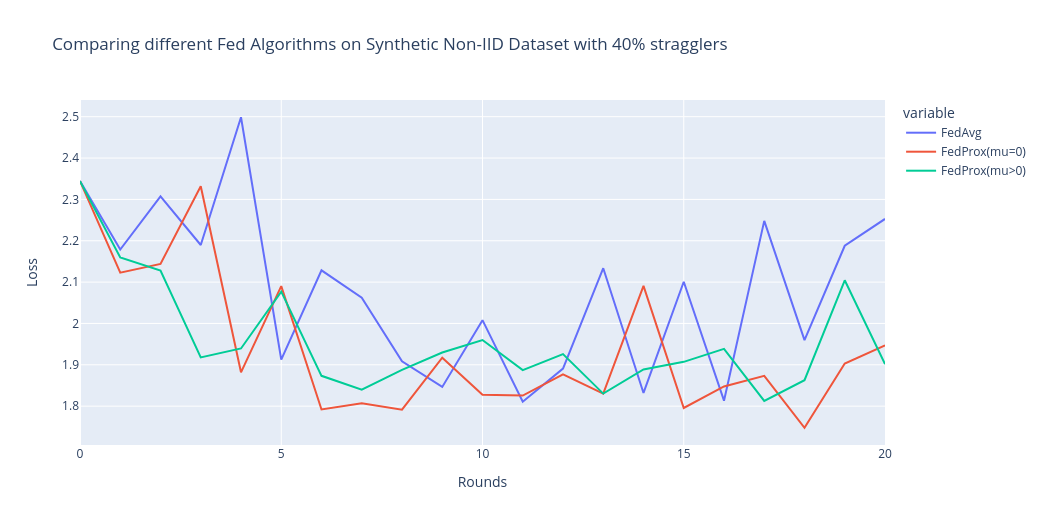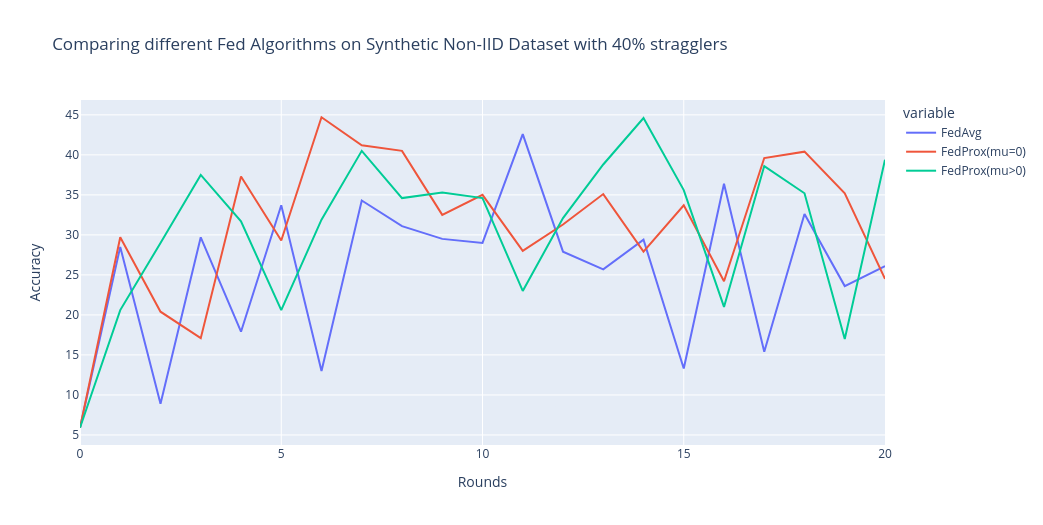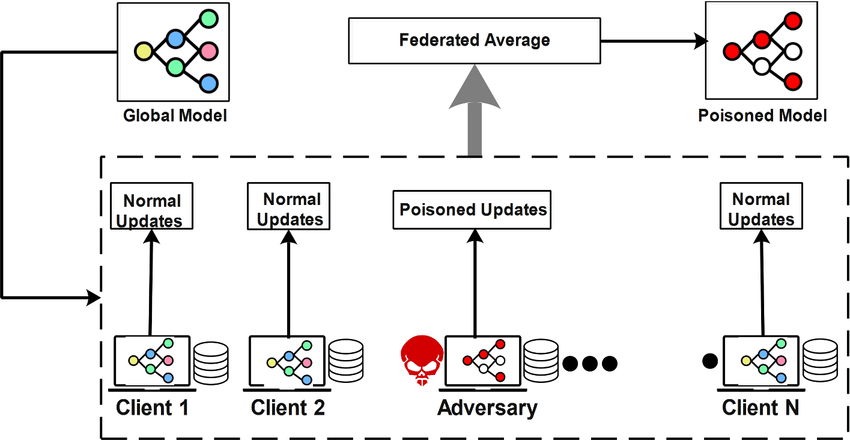The biggest obstacle to using advanced data analysis isn’t skill base or technology; it’s plain old access to the data ~ Edd Wilder-James, Harvard Business Review
Modern devices have access to a wealth of data suitable for learning models, which can improve the user experience on the device. However, this rich data is often privacy sensitive, large in quantity, or both.
This problem can be solved using Federated Learning.
Federated Learning includes,
- Training data distributed on the devices.
- Learning a shared model by aggregating locally computed updates.
Main Features of Federated Learning
Federated learning comprises multiple client-server interactions. In each round, the server transmits the current global model to a set of nodes. These nodes train the transmitted model locally and send it to the server. Thereafter, the server aggregates these local models and updates the global model.
A single server round can be summarized with the following steps:
- Initialization of weights
- Selection of clients
- Sending global-model to selected clients
- Clients training the model on local data.
- Reporting the locally trained model to the server.
- Aggregation of local updates
- Updating global model.
FedAvg algorithm, combines local stochastic gradient descent (SGD) on each client with and a server that performs model averaging
https://arxiv.org/pdf/1602.05629.pdf
https://fedbiomed.gitlabpages.inria.fr/
The server executes the FedAvg algorithm for several rounds of training.
- First, the weights are initialized
- It samples a fraction of C of the K clients.
- The server sends the current round of weights to each client k.
- The weights for round t is denoted by wt.
- The client runs stochastic gradient descent (SDG) on their local data for E epochs.
- The updated weights are sent back to the server.
- Once the server receives the updated weights, it takes the weighted average.
Problems with FedAvg Algorithm
- It assumes all the devices will complete all E epochs. But in practice, different devices have different hardware capabilities. Therefore devices with incomplete epochs can lower the rate of convergence.
- FedAvg takes the weighted average depending upon the amount of data samples in a particular device. Hence it may favor certain devices more than the others.
FedProx is generalization and re-parametrization of FedAvg
In the context of systems heterogeneity, FedAvg does not allow participating devices to perform variable amounts of local work based on their underlying systems constraints.
Instead it is common to simply drop devices that fail to compute E epochs within a specified time window.
FedProx solves the above problems by following ideas:
- Allowing for variable amounts of work to be performed on local devices to handle stragglers
- Modified local subproblem
FedProx adds a proximal term to the local subproblem to effectively limit the impact of variable local updates.
The value of mu is selected by hyper-parameter tuning.
https://arxiv.org/pdf/1812.06127.pdf
The proximal term is beneficial in two aspects:
- It addresses the issue of statistical heterogeneity by restricting the local updates to be closer to the initial (global) model without any need to manually set the number of local epochs.
- It allows for safely incorporating variable amounts of local work resulting from systems heterogeneity.
qFedAvg tries to solve the problem of fair resource allocation of learning resources.
Fairness of performance distribution: For trained models
A natural idea to achieve fairness would be to reweight the objective assigning higher weights to devices with poor performance, so that the distribution of accuracies in the network shifts towards more uniformity
For given local non-negative cost functions
qFedAvg Algorithm
https://arxiv.org/pdf/1905.10497.pdf
- Language: Python
- Machine Learning Framework: PyTorch
- Environment: Google Colab
MNIST Handwritten Digit Classification Dataset The MNIST dataset is an acronym that stands for the Modified National Institute of Standards and Technology dataset.
It is a dataset of 60,000 small square 28x28 pixel grayscale images of handwritten single digits between 0 and 9. The task is to classify a given image of a handwritten digit into one of 10 classes representing integer values from 0 to 9, inclusively.
Synthetic Digits with noisy backgrounds for testing robustness of classification algorithms. This dataset contains synthetically generated images of English digits. The images are generated with varying scales and rotations.
Dataset Loading
Dataset is loaded from the torchvision.datasets module provided by Torchvision. I have loaded the train and test datasets and split them into multiple clients.
- Train sample size per client: 500 samples
- Test sample size per client: 100 samples
- Batch size: 25 samples
- Number of clients: 10
Client Data Distribution
Client data is distributed into two types:
- Independent and identically distributed (IID)
- Non independent and identically distributed (Non IID)
IID MNIST Clients
Non IID MNIST Client
Synthetic IID Client
Synthetic Non IID Clients
I have defined a Logistic Regression Classifier for digits classification.
Federated Algorithms
I have implemented three federated algorithms.
- FedAvg
- FedProx
- qFedAvg
Clients with IID Dataset
We can observe that qFedAvg results in significant convergence improvements relative to FedAvg and FedProx in IID settings with 0% and 40% stragglers. In both the IID settings, FedAvg and FedProx perform similarly. With FedAvg we drop the stragglers, whereas with FedProx(mu=0) we consider stragglers.
Client with Non IID Dataset
Relative to FedAvg and qFedProx, we can observe that FedProx results in significant convergence improvements in heterogeneous networks. We simulate different levels of systems heterogeneity by forcing 0%, 40% and 80% devices to be the stragglers (dropped by FedAvg).
We can observe that qFedAvg struggles to perform in Non IID settings. Performance of qFedAvg highly depends upon the hyper-parameters q and learning-rate.
If we compare FedAvg and FedProx(µ = 0), we can observe that considering variable amounts of work performed by devices can help in convergence.
With FedAvg with 40% and 80% stragglers, we can observe that it cannot converge efficiently. Comparing FedProx (µ = 0) with FedProx (µ > 0), we can see the effect of the proximal term.
FedProx with µ > 0 leads to more stable convergence and enables otherwise divergent methods to converge, both in the presence of systems heterogeneity (40% and 80% stragglers) and without systems heterogeneity (0% stragglers).
Clients with IID Synthetic Datasets
The performance of FedAvg and FedProx for synthetic-dataset with IID settings is like that of the MNIST dataset with IID settings. However, FedProx(µ=0) performs than the other two.
Clients with Synthetic Non IID datasets
For Synthetic data with non IID settings, FedProx(µ>0) shows smooth convergence compared the FedAvg and FedProx(µ=0).
Conclusion
qFedAvg performs very well in IID settings, outperforming FedAvg and FedProx. Training with qFedAvg requires rigorous tuning of hyper-parameters like q and learning-rate. FedProx allows for variable amounts of work to be performed locally across devices and relies on a proximal term to help stabilize the method. In every heterogeneous setting, we can observe that FedProx provides smooth convergence.
Federated learning comprises multiple client-server interactions. In each round, the server transmits the current global model to a set of nodes. These nodes train the transmitted model locally and send it to the server. Thereafter, the server aggregates these local models and updates the global model.
All clients in federated-learning have access to the training data, so the possibility of adding manipulated data weights to global machine learning model is high.
Model updates taken from large group of clients during training can contain such poisoned updates. Such updates can impact the perfomance of the global model
Poisioning attack classification
- Data Poisioning: Generating dirty samples to train the global model.
- Model Poisioning: Modify the updated model before sending it to the central server for aggregation.
- Data Modification: Adding a shade or pattern of another class to a targeted class or random label swap of the training dataset.
A backdoor attack is a method of inserting a malicious task into an existing model while maintaining the accuracy of the actual task. Identifying backdoor attacks can be difficult and time consuming, as the accuracy of actual ML tasks may not be immediately affected.
GANs stands for generative adversarial networks. GANs are increasingly popular in big data and also apply to FL based approaches. It can be used for launching poisioning and inference attacks. GANs can be used to get training data through inference and use GANs to poison the training data.
Central servers play an important role in federated learning. Model and model parameters selection, aggregation of client updates and deployment of global model are performed by the central server. Therefore a compromised central server is a huge threat to clients privacy. Such servers can extract clients private data or manipulate the global model.
Sniper is a filtering mechanism which is conducted by the global server to remove attackers from the global model. In this method we configure euclidean distance checks between the local models.
Sniper can recognize honest users and drop attack success rate significantly even when multiple attackers are in the federated learning system
Anomaly detection can detect various attacks such as data poisoning, model poisoning or torjar threats. This technique mostly utilizes statistical and analytical methods in order to identify unexpected pattern or activity. Profile of the normal behavior helps the anomaly detection system to detect deviations.
This technique utilizes an anomaly detector to filter out suspicious training data points. Data sanitization technique is a commonly used defence against data poisioning attac

